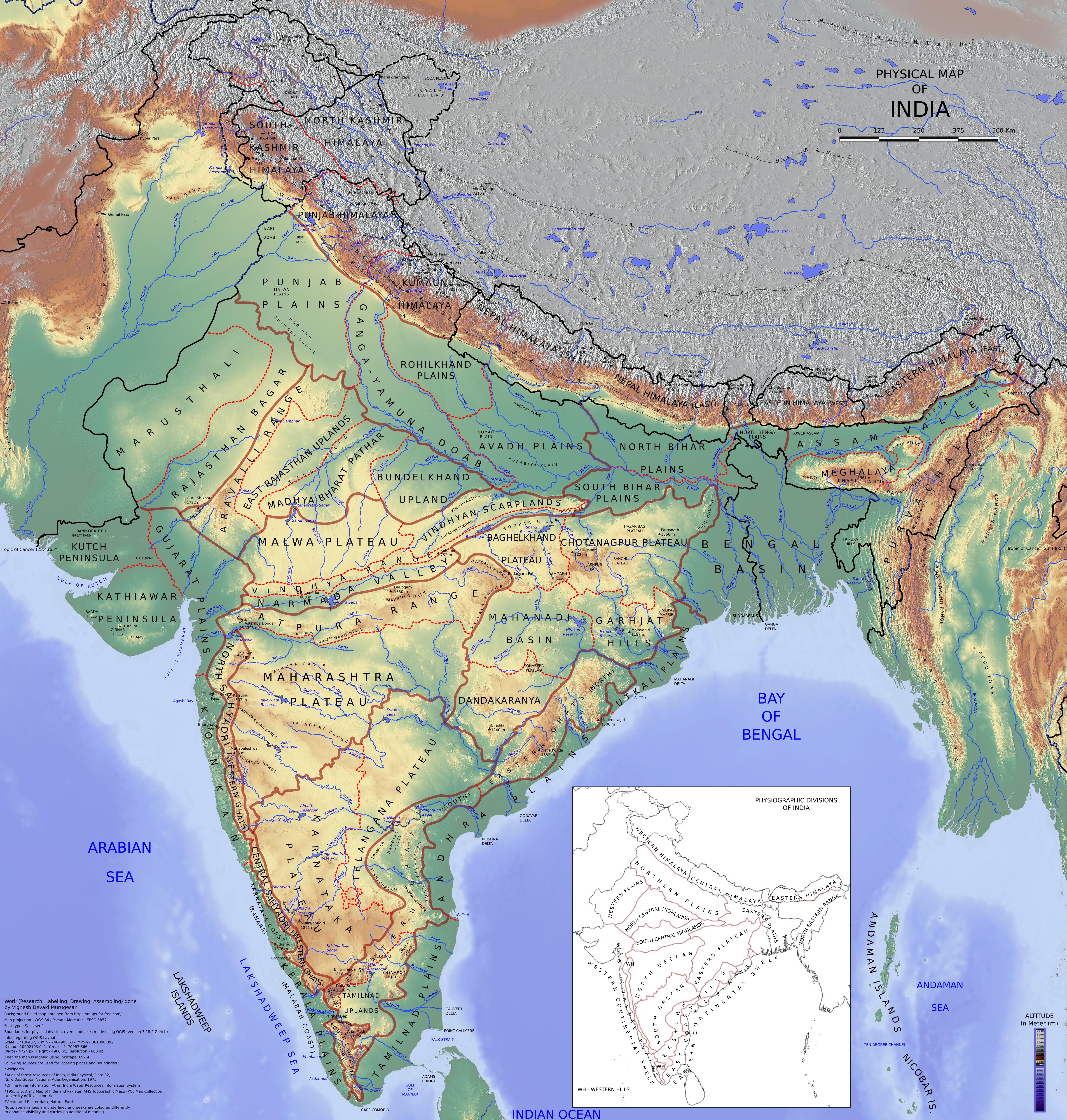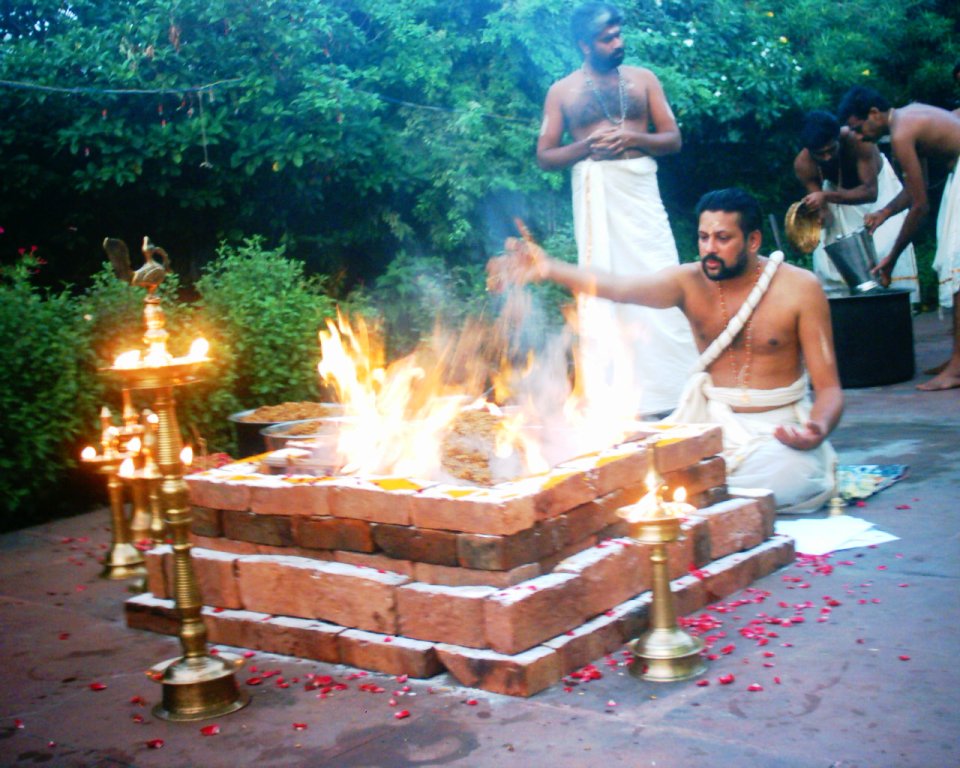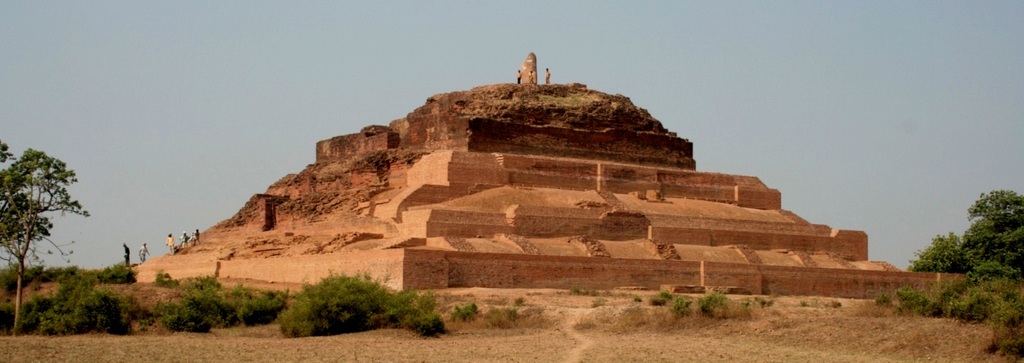|
Vedic Civilization
The Vedic period, or the Vedic age (), is the period in the late Bronze Age and early Iron Age of the history of India when the Vedic literature, including the Vedas (–900 BCE), was composed in the northern Indian subcontinent, between the end of the urban Indus Valley Civilisation and a second urbanisation, which began in the central Indo-Gangetic Plain BCE. The Vedas are liturgical texts which formed the basis of the influential Brahmanical ideology, which developed in the Kuru Kingdom, a tribal union of several Indo-Aryan tribes. The Vedas contain details of life during this period that have been interpreted to be historical and constitute the primary sources for understanding the period. These documents, alongside the corresponding archaeological record, allow for the evolution of the Indo-Aryan and Vedic culture to be traced and inferred. The Vedas were composed and orally transmitted with precision by speakers of an Old Indo-Aryan language who had migrated into ... [...More Info...] [...Related Items...] OR: [Wikipedia] [Google] [Baidu] |
Indian Subcontinent
The Indian subcontinent is a physiographic region of Asia below the Himalayas which projects into the Indian Ocean between the Bay of Bengal to the east and the Arabian Sea to the west. It is now divided between Bangladesh, India, and Pakistan. (subscription required) Although the terms "Indian subcontinent" and "South Asia" are often also used interchangeably to denote a wider region which includes, in addition, Bhutan, the Maldives, Nepal and Sri Lanka, the "Indian subcontinent" is more of a geophysical term, whereas "South Asia" is more geopolitical. "South Asia" frequently also includes Afghanistan, which is not considered part of the subcontinent even in extended usage.Jim Norwine & Alfonso González, ''The Third World: states of mind and being'', pages 209, Taylor & Francis, 1988, Quote: ""The term "South Asia" also signifies the Indian Subcontinent""Raj S. Bhopal, ''Ethnicity, race, and health in multicultural societies'', pages 33, Oxford University Press, 2007, ; Q ... [...More Info...] [...Related Items...] OR: [Wikipedia] [Google] [Baidu] |
Indo-Gangetic Plain
The Indo-Gangetic Plain, also known as the Northern Plain or North Indian River Plain, is a fertile plain spanning across the northern and north-eastern part of the Indian subcontinent. It encompasses North India, northern and East India, eastern India, eastern Pakistan, southern Nepal, and almost all of Bangladesh. It is named after the two major river systems that drain the region–Indus River, Indus and Ganges. It stretches from the Himalayas in the north to the northern edge of the Deccan plateau in the south, and extends from North East India in the east to the Iranian border in the west. The region is home to many major cities and nearly one-seventh of the world's population. As the region was formed by the deposits of the three major rivers–Indus, Ganges and Brahmaputra, the plains consists of the world's largest expanse of uninterrupted alluvial soil, alluvium. Due to its rich water resources, it is one of the world's most densely populated and intensely farmed areas. ... [...More Info...] [...Related Items...] OR: [Wikipedia] [Google] [Baidu] |
Śrauta
Śrauta (Sanskrit: श्रौत) is a Sanskrit word that means "belonging to śruti", that is, anything based on the Vedas of Hinduism. It is an adjective and prefix for texts, ceremonies or person associated with śruti. The term, for example, refers to Brahmins who specialise in the ''śruti'' corpus of texts, and Śrauta Brahmin traditions in modern times can be seen in Kerala and Coastal Andhra. Etymology and meaning The Sanskrit word ''śrauta'' is rooted in ''śruti'' ("that which is heard", referring to scriptures of Hinduism). Johnson says that ''śrauta'', is an adjective that is applied to a text, a ritual practice, or a person, that is associated with ''śruti''. Klostermaier concurs, stating that the prefix means "belonging to ''śruti''", and includes ceremonies and texts related to ''śruti''. The word is sometimes spelled ''shrauta'' in scholarly literature. History Spread via Indian religions, homa traditions are found all across Asia, from Samarkand to Japan, ... [...More Info...] [...Related Items...] OR: [Wikipedia] [Google] [Baidu] |
Janapada
The Janapadas () () (c. 1100–600 BCE) were the realms, republics (ganapada) and kingdoms (sāmarājya) of the Vedic period in the Indian subcontinent. The Vedic period reaches from the late Bronze Age into the Iron Age: from about 1500 BCE to the 6th century BCE. With the rise of sixteen ''Mahajanapadas'' ("great janapadas"), most of the states were annexed by more powerful neighbours, although some remained independent. Etymology The Sanskrit term ''janapada'' is a tatpurusha compound term, composed of two words: ''jana'' and ''padna''. ''Jana'' means "person" or "people" (cf. Latin cognate ''genus'', English cognate ''kin''). The word ''pada'' means "foot" (cf. Latin cognate ''pedis''); from its earliest attestation, the word has had a double meaning of "realm, territory" and "subject population" (cf. Hittite ''pedan'', "place"). Linguist George Dunkel compares the Greek ''andrapodon'' "slave", to PIE "fetters" (i.e. "what is attached to the feet"). Sanskrit ''pad� ... [...More Info...] [...Related Items...] OR: [Wikipedia] [Google] [Baidu] |
Iron Age
The Iron Age () is the final epoch of the three historical Metal Ages, after the Chalcolithic and Bronze Age. It has also been considered as the final age of the three-age division starting with prehistory (before recorded history) and progressing to protohistory (before written history). In this usage, it is preceded by the Stone Age (subdivided into the Paleolithic, Mesolithic and Neolithic) and Bronze Age. These concepts originated for describing Iron Age Europe and the ancient Near East. In the archaeology of the Americas, a five-period system is conventionally used instead; indigenous cultures there did not develop an iron economy in the pre-Columbian era, though some did work copper and bronze. Indigenous metalworking arrived in Australia with European contact. Although meteoric iron has been used for millennia in many regions, the beginning of the Iron Age is defined locally around the world by archaeological convention when the production of Smelting, smelted iron (espe ... [...More Info...] [...Related Items...] OR: [Wikipedia] [Google] [Baidu] |
Ganges
The Ganges ( ; in India: Ganga, ; in Bangladesh: Padma, ). "The Ganges Basin, known in India as the Ganga and in Bangladesh as the Padma, is an international which goes through India, Bangladesh, Nepal and China." is a trans-boundary river of Asia which flows through India and Bangladesh. The river rises in the western Himalayas in the States and union territories of India, Indian state of Uttarakhand. It flows south and east through the Gangetic Plain, Gangetic plain of North India, receiving the right-bank tributary, the Yamuna, which also rises in the western Indian Himalayas, and several left-bank tributaries from Nepal that account for the bulk of its flow. In West Bengal state, India, a feeder canal taking off from its right bank diverts 50% of its flow southwards, artificially connecting it to the Hooghly River. The Ganges continues into Bangladesh, its name changing to the Padma River, Padma. It is then joined by the Jamuna River (Bangladesh), Jamuna, the lower str ... [...More Info...] [...Related Items...] OR: [Wikipedia] [Google] [Baidu] |
Pastoralism
Pastoralism is a form of animal husbandry where domesticated animals (known as "livestock") are released onto large vegetated outdoor lands (pastures) for grazing, historically by nomadic people who moved around with their herds. The animal species involved include cattle, camels, goats, yaks, llamas, reindeer, horses, and sheep. Pastoralism occurs in many variations throughout the world, generally where environmentally effected characteristics such as aridity, poor soils, cold or hot temperatures, and lack of water make crop-growing difficult or impossible. Operating in more extreme environments with more marginal lands means that pastoral communities are very vulnerable to the effects of global warming. Pastoralism remains a way of life in many geographic areas, including Africa, the Tibetan plateau, the Eurasian steppes, the Andes, Patagonia, the Pampas, Australia and many other places. , between 200 million and 500 million people globally practiced pa ... [...More Info...] [...Related Items...] OR: [Wikipedia] [Google] [Baidu] |
Punjab
Punjab (; ; also romanised as Panjāb or Panj-Āb) is a geopolitical, cultural, and historical region in South Asia. It is located in the northwestern part of the Indian subcontinent, comprising areas of modern-day eastern Pakistan and northwestern India. Pakistan's major cities in Punjab are Lahore, Faisalabad, Rawalpindi, Gujranwala, Multan, Sialkot, and Bahawalpur, while India’s are Ludhiana, Amritsar, Chandigarh, Jalandhar, Patiala, Mohali, and Bathinda. Punjab grew out of the settlements along the five rivers, which served as an important route to the Near East as early as the ancient Indus Valley civilization, dating back to , followed by migrations of the Indo-Aryan peoples. Agriculture has been the chief economic feature of the Punjab and formed the foundation of Punjabi culture. The Punjab emerged as an important agricultural region, especially following the Green Revolution during the mid-1960s to the mid-1970s, and has been described as the " breadbask ... [...More Info...] [...Related Items...] OR: [Wikipedia] [Google] [Baidu] |
Late Bronze Age
The Bronze Age () was a historical period characterised principally by the use of bronze tools and the development of complex urban societies, as well as the adoption of writing in some areas. The Bronze Age is the middle principal period of the three-age system, following the Stone Age and preceding the Iron Age. Conceived as a global era, the Bronze Age follows the Neolithic, with a transition period between the two known as the Chalcolithic. The final decades of the Bronze Age in the Mediterranean basin are often characterised as a period of widespread societal collapse known as the Late Bronze Age collapse (), although its severity and scope are debated among scholars. An ancient civilisation is deemed to be part of the Bronze Age if it either produced bronze by smelting its own copper and alloying it with tin, arsenic, or other metals, or traded other items for bronze from producing areas elsewhere. Bronze Age cultures were the first to develop writing. According to ... [...More Info...] [...Related Items...] OR: [Wikipedia] [Google] [Baidu] |
Indo Aryans
Indo-Aryan peoples are a diverse collection of peoples predominantly found in South Asia, who (traditionally) speak Indo-Aryan languages. Historically, Aryans were the Indo-Iranians, Indo-Iranian speaking Pastoralism, pastoralists who Indo-Aryan migrations, migrated from Central Asia into South Asia and introduced the Proto-Indo-Aryan language. The early Indo-Aryan migrations, Indo-Aryan peoples were known to be closely related to the Indo-Iranians, Indo-Iranian group that have resided north of the Indus River; an evident connection in cultural, linguistic, and historical ties. Today, Indo-Aryan speakers are found south of the Indus, across the modern-day regions of Bangladesh, Nepal, eastern-Pakistan, Sri Lanka, Maldives and northern-India. History Proto-Indo-Iranians The introduction of the Indo-Aryan languages in the Indian subcontinent was the outcome of a Indo-Aryan migrations, migration of Indo-Aryan people from Central Asia into the northern Indian subcontinent ... [...More Info...] [...Related Items...] OR: [Wikipedia] [Google] [Baidu] |
Patrilineal
Patrilineality, also known as the male line, the spear side or agnatic kinship, is a common kinship system in which an individual's family membership derives from and is recorded through their father's lineage. It generally involves the inheritance of property, rights, names, or titles by persons related through male kin. This is sometimes distinguished from cognate kinship, through the mother's lineage, also called the spindle side or the distaff side. A patriline ("father line") is a person's father, and additional ancestors, as traced only through males. In the Bible In the Bible, family and tribal membership appears to be transmitted through the father. For example, a person is considered to be a priest or Levite, if his father is a priest or Levite, and the members of all the Twelve Tribes are called Israelites because their father is Israel (Jacob). In the first lines of the New Testament, the descent of Jesus Christ is counted through the male lineage from Abraham through ... [...More Info...] [...Related Items...] OR: [Wikipedia] [Google] [Baidu] |
Indo-Aryan Migration Theory
The Indo-Aryan migrations were the migrations into the Indian subcontinent of Indo-Aryan peoples, an ethnolinguistic group that spoke Indo-Aryan languages. These are the predominant languages of today's Bangladesh, Maldives, Nepal, North India, Pakistan, and Sri Lanka. Indo-Aryan migration into the region, from Central Asia, is considered to have started after 2000 BCE as a slow diffusion during the Indus Valley Civilisation#Late Harappan, Late Harappan period and led to a language shift in the northern Indian subcontinent. Several hundred years later, the Iranian languages were brought into the Iranian plateau by the Iranians, who were closely related to the Indo-Aryans. The Indo-Iranians, Proto-Indo-Iranian culture, which gave rise to the Indo-Aryan peoples, Indo-Aryans and Iranians, developed on the Eurasian Steppe#Kazakh Steppe (Central Steppe), Central Asian steppes north of the Caspian Sea as the Sintashta culture (c. 2200-1900 BCE), in present-day Russia and Kazakhstan, ... [...More Info...] [...Related Items...] OR: [Wikipedia] [Google] [Baidu] |










